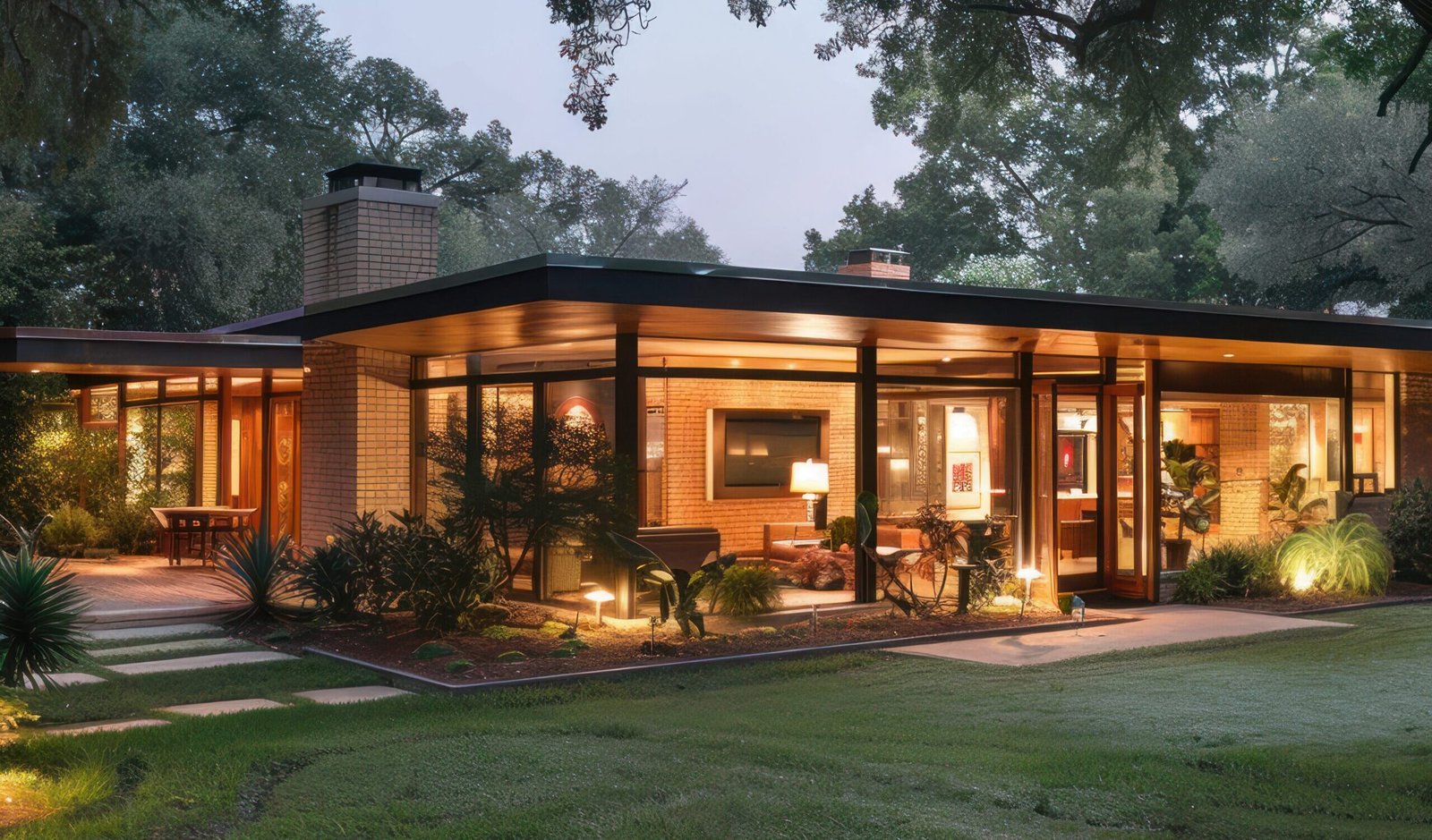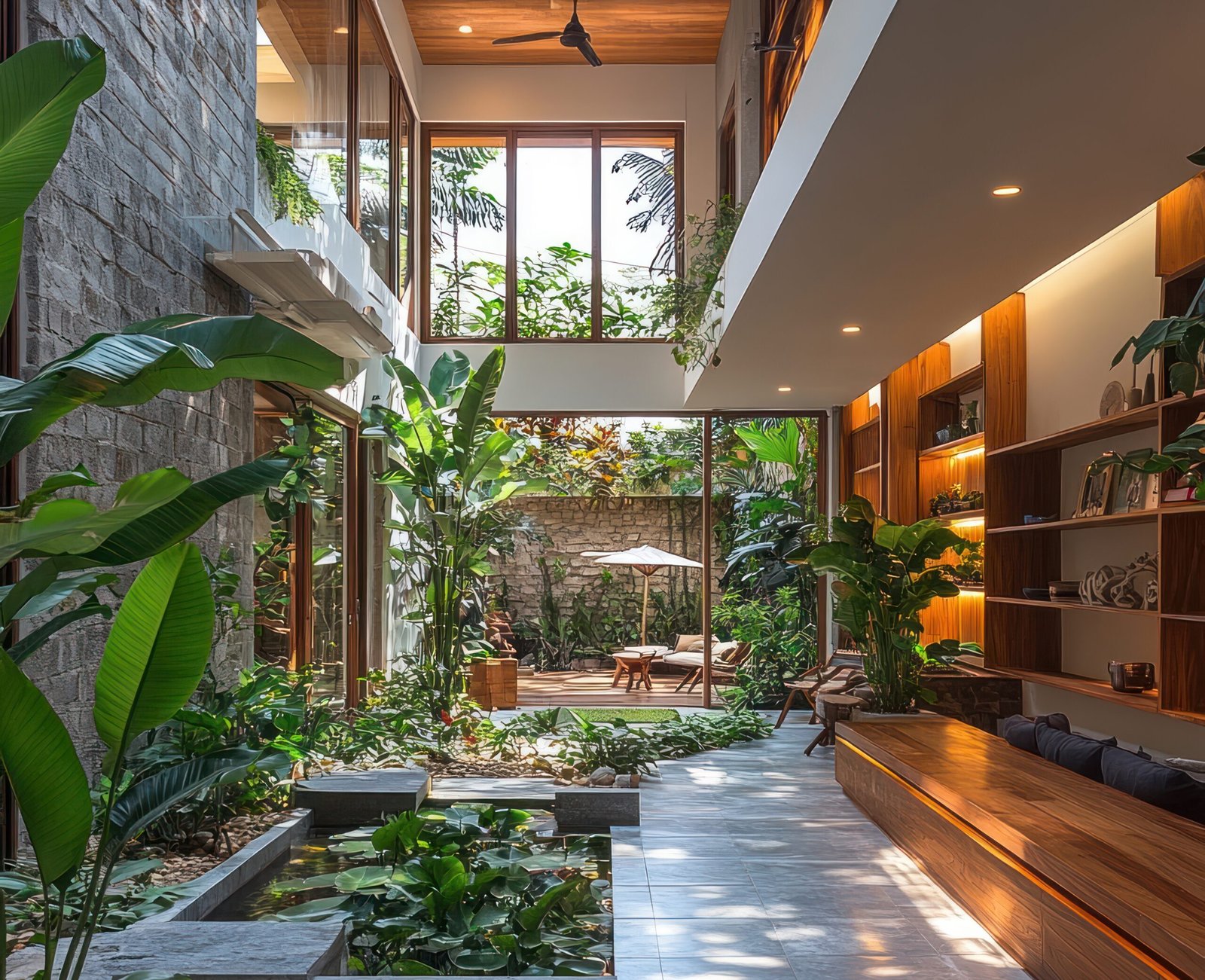
As autumn announces itself with softer light and inviting temperatures, a new window opens to rediscover the spaces we inhabit. In this season of transition and contemplation, the Mid-Century Modern aesthetic resurfaces with power and poetry, connecting past and present through elegant lines, natural materials, and a profound harmony with the surroundings.
The style, established between the 1940s and 1970s, goes far beyond visual beauty: it offers us a philosophy of living. Environments with large glass planes, integration between interior and exterior, and generous use of wood reveal an architecture that invites pause, natural light, and sensory refuge. It’s as if each straight line were a gesture of welcome, and each earthy tone, an invitation to breathe more slowly. In this context, wooden lighting fixtures gain prominence as protagonists of comfort.
They don’t just illuminate, but visually warm environments, bringing an organic texture that converses with furniture and reinforces the connection with nature. Their light, generally more diffused, creates an intimate and calm atmosphere, perfect for autumn’s introspection. The design can vary between sculptural forms and pure lines, but the result is always the same: harmony and natural elegance.
Another trend that strengthens is the use of brown corten steel pieces, which evoke the rusticity of earth with a touch of sophistication. This finish, with its reddish nuances and weathered appearance, creates an elegant contrast with external vegetation and neutral environmental elements, such as stones, raw fabrics, and light wood. Corten has the power to anchor the gaze, bring visual depth and timeless charm that echoes perfectly with the autumnal spirit.
In accelerated times, it reminds us of the importance of slowing down, of opening windows and allowing the surroundings to embrace us. Of having coffee slowly while watching the falling leaves, of reconnecting with what is essential. This autumn is not just a season, it’s a state of mind. And design is the guiding thread of this experience.
Houses dress themselves in textures: linen, leather, wool, artisanal ceramics. The season’s tones, caramel, terracotta, moss, and amber, envelop spaces with warmth and sophistication. Lighting ceases to be merely functional and becomes part of the space’s narrative, guiding emotions and highlighting volumes with subtlety.
The true beauty of Mid-Century Modern lies precisely in its timelessness. It molds itself to the present with lightness, without losing its essence.
— Jaqueline Fleck

